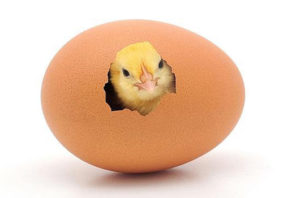In the process of raising chickens in layer chicken cages, it is very important for farmers to manage the environment of the house. The scientific control of the chicken house environment is scientific and reasonable, which contributes to the growth and production of laying hens. Moreover, chickens are used in laying hen cages, and the breeding density is large, so the environmental requirements are very strict. The following authors will use the layer chicken cages to raise chickens for some requirements of the chicken house environment, as well as feeding points to tell the farmers for reference.
1. The temperature of the house: whether the temperature is suitable or not affects the growth of the laying hen, the quality of laying eggs and eggs, and the compensation of the feed. In the process of feeding, the suitable temperature range of the laying hen is between 5 ° C and 28 ° C, and the suitable temperature for laying eggs is 13 ° C – 20 ° C. Among them, the egg production rate was the highest at 13 °C-16 °C, and the best for the feed at 15.5 °C-20 °C. According to various factors, the suitable temperature for the breeding process of the farmer is 13 °C-23 °C, and the optimum temperature is 16 °C-21 °C. The minimum temperature should not be lower than 7.8 ° C, and the maximum temperature should not exceed 28 ° C. Otherwise, it will have a greater impact on the laying performance of laying hens.

2. Humidity of the chicken house: Many farmers do not care much about the humidity of the house, but the humidity also has an effect on the laying hen. Generally speaking, the suitable relative humidity of the laying hen is about 60%, but if the relative humidity of the chicken house is about 45%-70%, the effect on the production performance of the laying hen will not be great. The humidity in the chicken house is too low or too high, which is harmful to the growth and production performance of the chicken. When the house temperature is low, the farmer can choose to sprinkle water on the ground, or you can choose to put the water basin and kettle on the stove to evaporate the water to improve the indoor humidity. When the humidity of the house is too high, the humidity should be reduced by increasing the amount of ventilation, often clearing the dung, and putting some moisture in the house.
3. Ventilation and ventilation of the chicken house: Reasonable and effective ventilation can remove harmful gases and ammonia bacteria from the house, and let fresh air enter the house. And ventilation can also have the advantages of adjusting the temperature of the house and reducing the humidity. However, these are all based on reasonable ventilation work. Unreasonable ventilation will not only have these advantages, but also affect the health and production of laying hens. Generally, current farmers will choose to use fan equipment for ventilation. Mechanical ventilation can set time and ventilation, which can be better managed. In addition, farmers should pay attention to not allowing the wind to blow directly to the chicken body.
The above three points are the author’s description of the environmental requirements of the chicken house using the layer rearing equipment. If you want to know more, or have other questions you would like to consult, please feel free to call us, our technical service staff will be invited to provide you with the most satisfactory service!